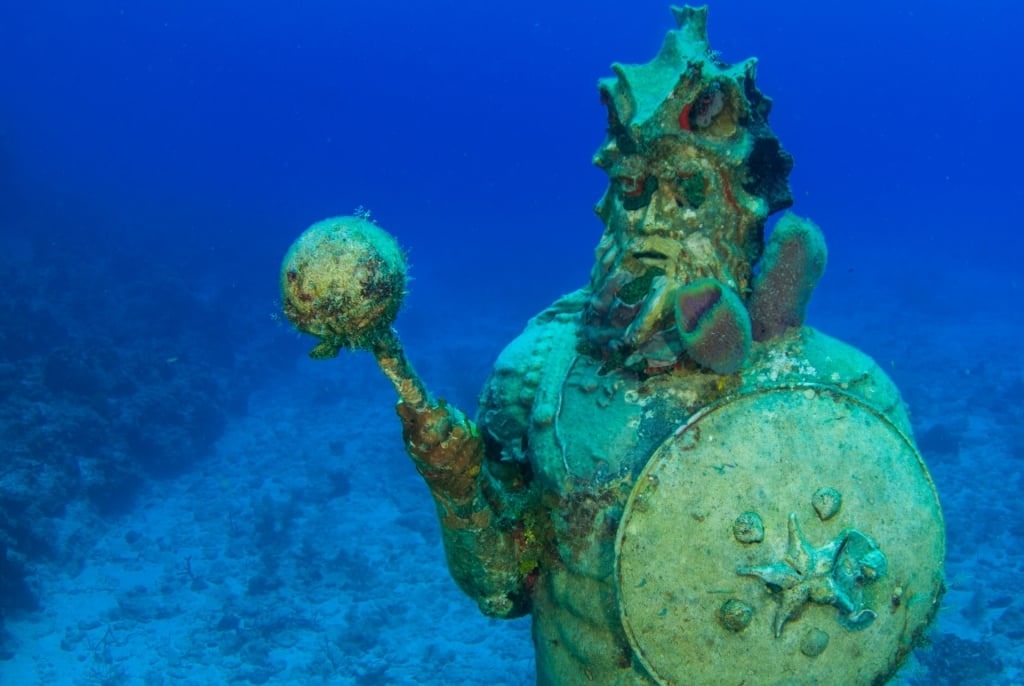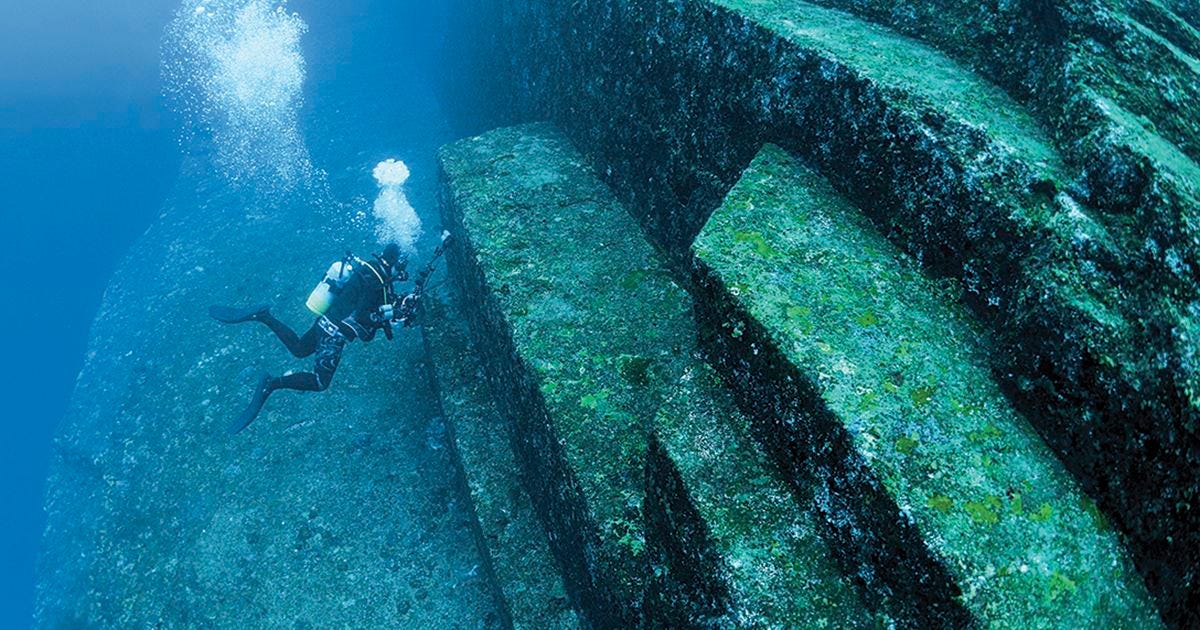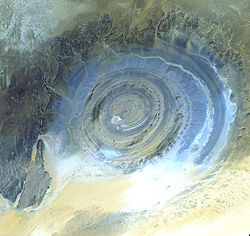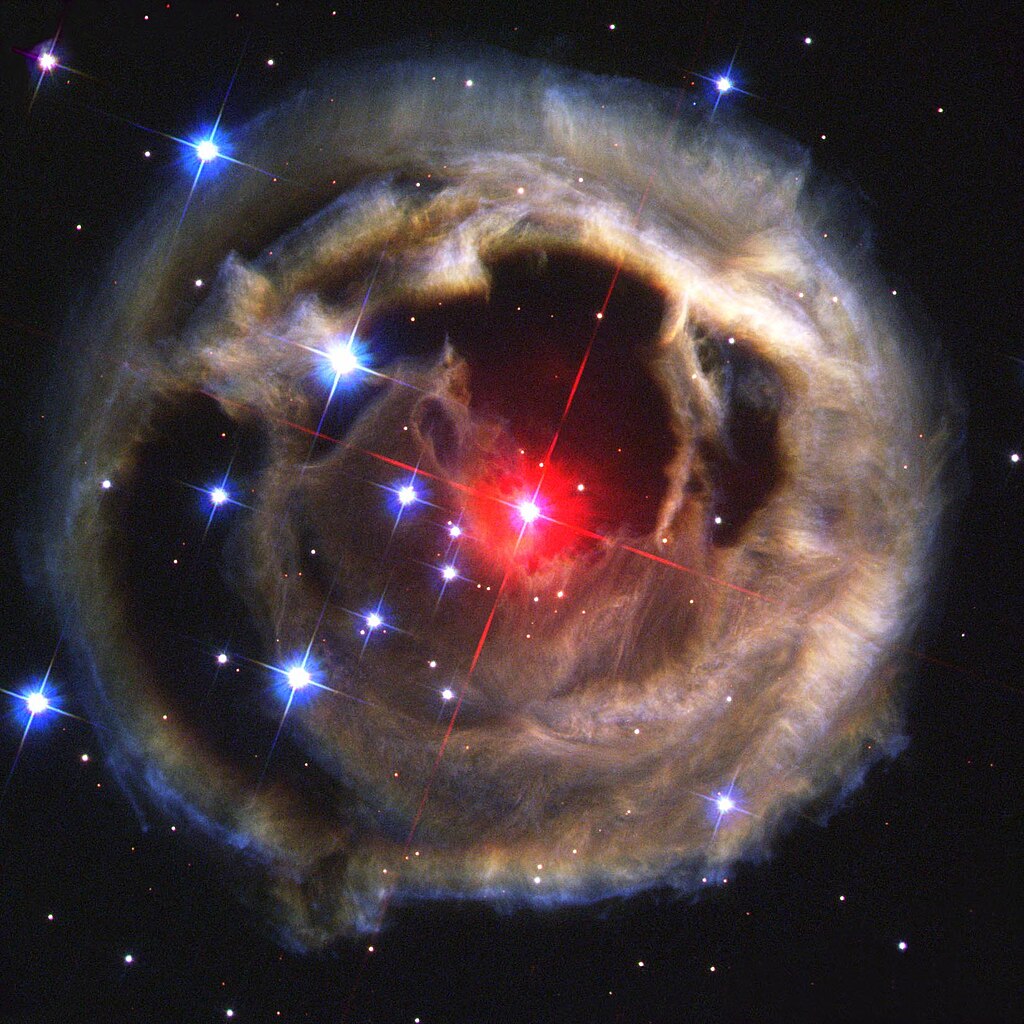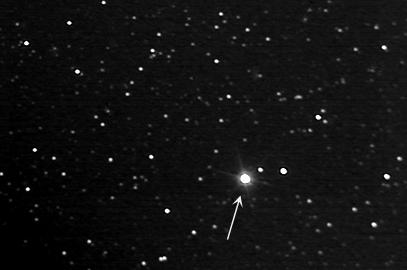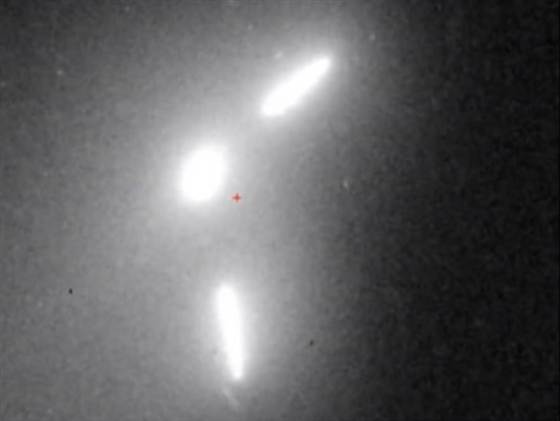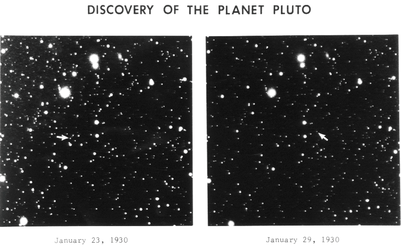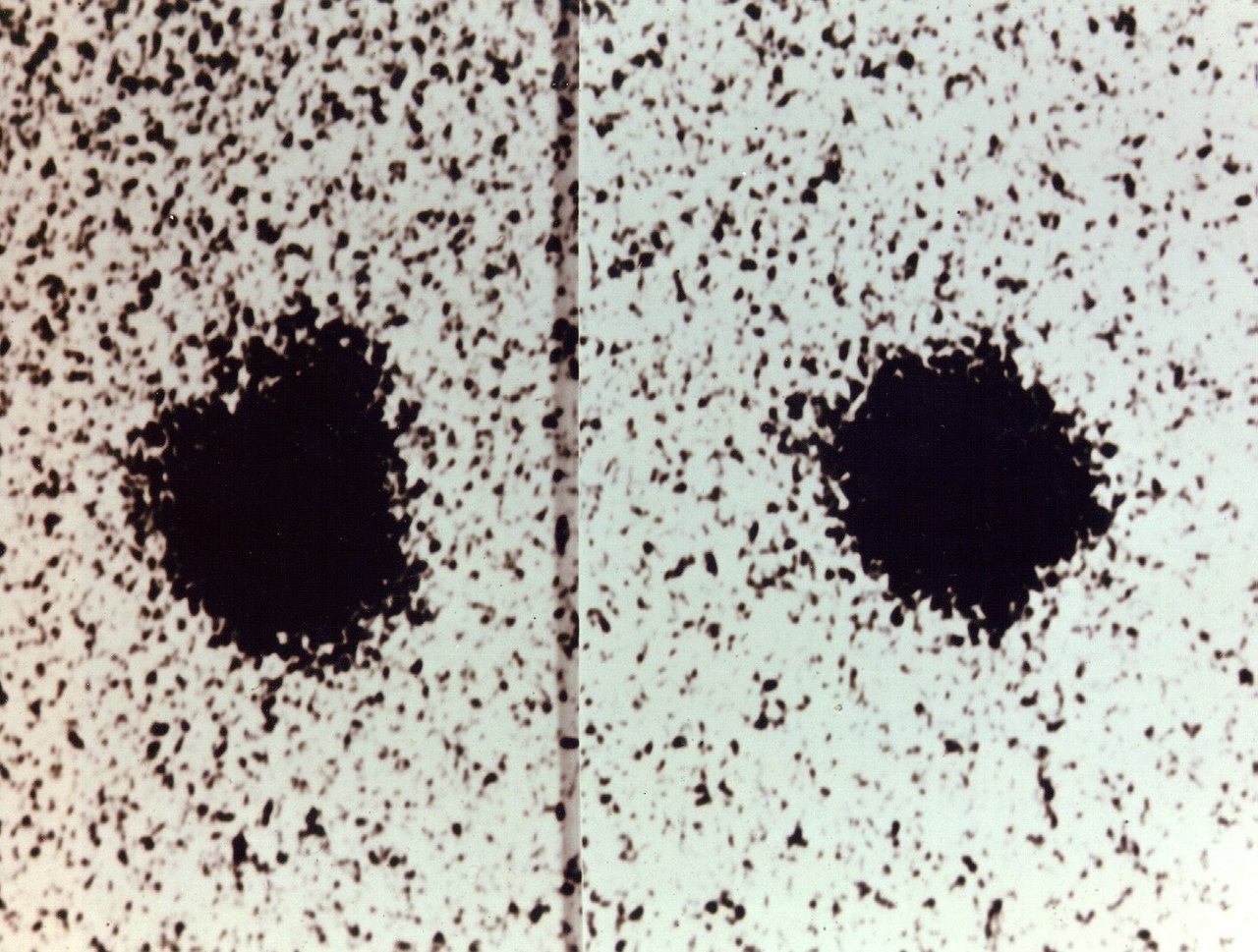We hype up our favorite bands; We critique on sports and cars; We opine about pop culture. On occasion, will do some creative writing. This is PATHOLOGICAL HATE. Follow us on Twitter: @pathological_h8
Wednesday, February 15, 2023
Poles reversal = large scale devastation? (Part one)
Hello, all. Those who have managed to find this blog among blogs. I thank you for taking the time to read what I am going to post here. I hope that what I’m going to say doesn’t scare individuals. However, I do feel that it should be known that what I’m going to say is very important and if not dire for those to heed. We need to understand what is exactly happening on our planet. We need to understand the importance of history and how we are doomed to repeat it. We are living in very hostile times. I agree that things are quite scary. However, together we can come together as a human race and try and save our planet and the whole entire human race which could be facing what maybe the most dangerous times ahead. We are only facing the tip of the iceberg of what is to be expected in our near future. I don’t think the end of the world will be the results of nuclear annihilation. A fate that took place on Mars. I’m convinced a global cataclysm is impending and we need to watch for the signs or planet is issuing. Most importantly, we need to look to the past and see the patterns and trends. Again, please take this as a theory to expand your horizons. I am not here to fearmonger or cause an uproar. We as a human race need to know exactly what’s going on and what we should do to prepare ourselves for what may be our ultimate undoing. Please be warned.
Evidence #1: I decided to really dig into the photo shown regarding the discovery of the Sphinx and the pyramids in Egypt. You’ll see that the Sphinx was buried neck deep in sand. Let’s do the math. The Sphinx is about 66 feet tall. The average height of a 10-story building is between 100-110 feet. This means that the Sphinx was literally covered in nearly 20-40 feet of sand and mud. A typical residential house is only 20-feet tall! The outer layer of the Sphinx is covered in heavy water erosion. The pyramids were covered with an outer coating of white limestone. However, the only evidence of this is found near the top of the great pyramid. Why did this white limestone layer nearly vanish? Scientist want you to believe that it was stolen over the decades. However, I’m convinced that a powerful wind swept through and destroyed the outer layer and drenched everything in water and sand. Which over the decades hardened and coated the Sphinx and damaged the coating of the pyramids.
The Mayan Civilization which was discovered in 1830s. It looks like the pyramid was subjected to heavy wind and water damage. Again, overtime when something is destroyed and there’s no human intervention to keep buildings-maintained overtime. Things begin to disintegrate and fall apart. The only thing we have left is just rubble and whatever could withstand the harsh elements of nature. Everything else disappears without a trace.
The Easter Island Statues is another example of high strength winds and water sweeping across the island. The statues are buried neck deep in dirt. How did these statues get buried this high in dirt? The statues stand around 13 feet tall. Which means that nearly 6 to 7 feet of the statue was covered in dirt. Maybe more. How did these statues get covered in so much mud over the decades? The only thing that would logically explain this is some sort of tsumani and high winds that swept through the area and buried it. The faces look like they were heavily eroded, more so than usual. Also, the 12,000 people lived on this island at one point. However, it doesn’t look as if 12,000 people lived on this island. How did they even get to this island?
Easter Island is pretty isolated from South America and any other major land mass. Yet somehow an ancient civilization thrived here and had 12,000 people living here. My theory is that there had to have been some kind of connecting land mass which allowed people to migrate from modern day Chile to this island. The main reason there’s no trace of this is because of a high-speed wind and tsunami which engulfed a lot of land mass and sank it into the ocean.
Which explains this.
And this.
You can come to your own conclusion. However, my job here is to present the facts to further back my theory as to why a global cataclysm took place on our planet. Magnificent statues and cities discovered in the ocean, which baffles scientists as to how it gotten there. Think about this for a second. Pangea, the super continent that existed proves that land mass can shift over time. We know this because we have evidence of. However, why is this same principle not applied to land mass that is at the bottom of our oceans? We have found massive cities down and other strange anomalies that no one can explain how or why it is there. I can give an incredibly good theory. A tsunami came through and buried land masses and destruction was so massive that it left almost nothing left in its path. We only have relics of old monuments and structures that managed to withstand the winds to remind us of what was once a glories civilization.
We know our planet is constantly expanding and constantly changing. However, what makes me wonder why everyone is so quick to dismiss the possibility of a tsunami sweeping across our planet and destroying much of everything on it? Again, when buildings and structures are left unmaintained over time slowly disintegrate and fall apart. We know this from the many of the pyramids which look like they’ve been destroyed from high winds and left to erode over time. Mother nature takes back what we’ve taken from it. Once the next cataclysm takes place. We will be another civilization that’s completely unknown or forgotten. The future civilization will look at what we’ve done and wonder how we managed to prosper and get as far as we’ve gotten. There won’t be much evidence of what we’ve built. Who we are as people and what life was like for us. Again, it’s almost as if the entire planet goes through a reset and starts all over again. It’s a very frightening thought, considering the damage that can be seen throughout these ancient ruins.
The Sahara Desert was once a tropical forest. However, it looks like a wasteland.
Someone explain this.
And this.
The Eye of the Sahara looks like it would fit the exact dimensions of Atlantis. Again, a global cataclysm took place and destroyed it. Plato described Atlantis as looking like what the Eye of the Sahara looks like, now. We might be looking at all the wrong places for Atlantis.
Friday, February 10, 2023
Volkswagen products we wish were sold here

Volkswagen Polo
What is it? The VW Polo is a small hatchback about
similar in size to the Ford Fiesta.
Why should it be sold here? It should be sold here
as an alternate to the Ford Fiesta and Mini 5-door hardtop. The Fiesta ST
doesn’t have a proper rival other than the Mini and that one is pretty
expensive in the Cooper-S trim, so Ford pretty much dominates it because of its
horsepower to price ratio. Also, this would be a great way to have a volume
seller for dealer lots and move the Golf upmarket slightly.
Engine choices: A turbocharged 1.4 from the Jetta
detuned between 130hp – 145hp would be a great start for the more mainstream
forms while the GTI should push at least 200hp from the same 1.4 turbo. Pricing
should be similar to the Ford Fiesta’s.

Volkswagen Golf SV
What is it? Just think of the Golf SV as a roomier
more practical version of the Golf without being as large as a Golf wagon.
Why should it be sold here? The TDI Emissions
scandal really did give a huge blow to Volkswagen’s green image. Hybrids are
the next option for them and a Ford C-Max rival would be a great start. Many
people want minivan-like space but in a smaller package. This would be a great
space for VW to enter using the old-Jetta Hybrid powertrain. Maybe update it to
offer plug-in feature and improved fuel economy.
Engine choices: 1.4tsi with plug-in technology to
improve fuel consumption and lower emissions. Pricing should be on point with
the Ford C-Max.
Volkswagen Passat Alltrack
What is it? It’s been on sale in Europe for a while
now and it is a lifted version of the Passat wagon (just think German Subaru
Outback). It would be a great option for anyone considering the Subaru Outback
or even Volvo V60 CC. It’s much more spacious than the Golf Alltrack and it is
a crossover. Crossovers are red hot right now and this could give VW some extra
showroom traffic and leap into Subaru territory with the outdoorsy types who
may want a more premium vehicle without having to pay the premium price. If VW
can keep this under $40k it would be a great option.
Engine choices: The 2-liter turbocharged
four-cylinder from the GTI would be a great engine option and/or an optional six-cylinder
from the Passat would be a nice addition. It may tiptoe a little into Audi
Allroad territory but the price points would keep people from cross-shopping
the two.

VW Beetle Dune (4-motion)
What is it? The Beetle Dune is a lifted version of
the standard Beetle with off-road appearance package. It would be nice if VW
offered 4-motion all-wheel-drive or a cheaper application to the Beetle Dune to
rival the upcoming X2 and or even just provide a niche vehicle for those who
love the way the Beetle looks and add light off-roading capabilities. Rememeber
VW crossovers are red hot these days and you do want as much showroom traffic
as you can get. This one may not happen however because 4-motion application
would make the Beetle Dune even more expensive and will fail to catch on when
Audi is pretty much almost the next step up.
Engine options: Since we’re still dreaming of an AWD
Beetle Dune, the 2-liter turbo four found in the standard Beetle would be good
or even an upgraded form from the GTI would be great. Heck since we are on the
subject of the Beetle, a R version of the Beetle would even be great. Add some
spice to the Beetle line-up and become a real poor man’s Porsche.


VW Gol Sedan or Polo sedan
What is it? Chevy Sonic, Toyota iA sedan look at
your possible new rival that could make them both run for their money. We’d
love to see the Gol sedan here even if it has just one engine and is priced
below $18K. The same engine from the base Jetta would be perfect for the sedan;
also the Gol could add some showroom traffic seeing that Americans love their
sedans. Best part is the Gol is built in Mexico so this would make it far
cheaper than the Polo, if costs are a concern for VW (TDI Emissions Scandal).
What is it? Look at it as a two-door GTI that
everyone has been begging for here. We don’t have a two-door Golf or GTI
anymore, why not just bring the Scirocco here offer both 1.8t and 2.0t engines
and spice up the line-up? I don’t see how this would catch on here in the U.S.
It would go perfect toe to toe with the Toyota GT86 even though it would be
front-wheel drive instead of rear-wheel drive, also the upcoming Civic Si coupe
would have some stiff competition as well.
Engine: 1.8t 170hp, 2.0t 210hp/220hp would be great
and even a R version with 300hp from the S3.
Sad note: With the shift towards crossovers. The Scirocco has been discontinued for 2017 due to slow sales in Europe. Let's not forget that Volkswagen did offer cool cars.
Sad note: With the shift towards crossovers. The Scirocco has been discontinued for 2017 due to slow sales in Europe. Let's not forget that Volkswagen did offer cool cars.
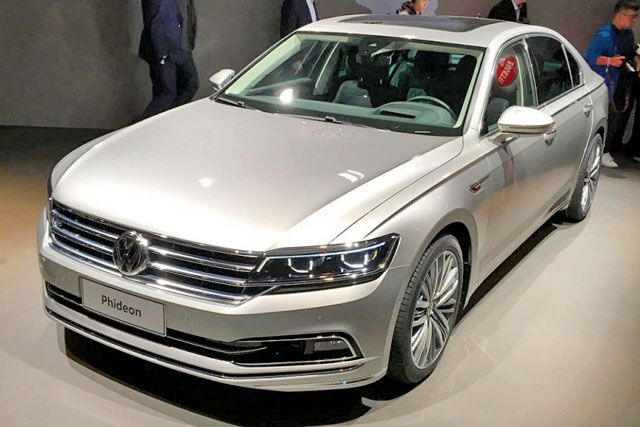
VW Phideon
What is it: Just think of this as the ultimate
Passat, it could even be a long-wheelbase version of the Passat? We just want
it sold here case closed. It would be a great alternate for the Toyota Avalon
and even Nissan Maxima. VW should price it at least $35k - $40k to make it more
appealing in that segment and offer a hybrid option also to entice those away
from Toyota and improve VW’s shattered image. Plus with the most legroom in its
class it would be even more appealing than most BMWs and even Audis out there.
Engine: 3.6-liter VR6 280hp with standard
all-wheel-drive. It should provide a valid reason to consider one other than
style.
It’s kind of sad that VW gave up on the Phaeton
which was such a great vehicle, just a tad overpriced. This could redeem the
Phaeton and provide a more affordable alternate to the more classy and
expensive. VW really should consider this one.
Sad note: This will also be a tough sale for Volkswagen considering that sedan sales have slowed down a lot. The Jetta, Passat and upcoming Arteon will be the only offerings. However, it would be a nice touch if Volkswagen did offer this with an attractive price tag and standard 4-motion all-wheel-drive.

Sad note: This will also be a tough sale for Volkswagen considering that sedan sales have slowed down a lot. The Jetta, Passat and upcoming Arteon will be the only offerings. However, it would be a nice touch if Volkswagen did offer this with an attractive price tag and standard 4-motion all-wheel-drive.

VW Cross-Polo
What is it? A crossover version of the Polo hatch
(that we wish were here). This version doesn’t come with all-wheel-drive but it
would be a nice feature to add. The Cross-Polo could bring in much wanted
buyers who are considering small crossovers such as the Mazda CX-3 and Honda
HR-V. Most in this segment don’t care too much for all-wheel-drive but desire
the raised driving position and low running costs. This would fare well as a
soft-roader for those who want the looks but don’t care about the off-road
prowl.
Engine: I know we keep using the 1.4 turbo engine
from the Jetta but this would be a good engine for a base form of many new
products here in the U.S. Mate it to VW’s amazing DSG gearbox and the
Cross-Polo could be a winning formula. Price it well and it will be a hit.


VW Caddy
What is it? Look at it as a Ford Transit Connect rival
and you’ll get the picture. Ford pretty much owns this segment and again why
not offer something to rival that and compete in that field? VW doesn’t need to
put any fancy engines in so the 1.4turbo and 1.8turbo engines would be enough. Optional
all-wheel-drive could entice the deal even more. We don’t know much about the
cargo van or even just a seven seat wagon option; it would be perfect for our
ever increasing desire to downsize. Mercedes jumped into this with the Sprinter
so maybe VW should consider an offering as well. I mean come on Europe has
several options in the commercial van segment.
We test drive (Euro-only cars) in UK (Part two)

Smart Forfour
Likes: It's dinky dimensions means it's quite literally easy to park and easy to live with. The turbo engines are the way to go if you find yourself on the motorway daily. It's a rather cheeky looking thing.
Dislikes: It's more fun to drive in town than on the motorway. Ride comfort is easily upset. The turbo engines are tricky to drive at low speeds and are priced rather steeply also.
Overall: Challenging street parking makes the Forfour the perfect companion.

Volkswagen Up GTI
Likes: It could be seen as a reincarnation of the original GTI. It's peppy in the corners and bends but classy when you're not driving it like a hooligan.
Dislikes: It's heavier than the original GTI. We can't have it.
Overall: GTI-tuned Volkswagen products seem so much better.

Mercedes A-class (A45 AMG)
Likes: It's wicked fast and wicked planted in the corners. It's more engaging to drive than the pointless GLA.
Dislikes: The suspension is so firm it's almost considered brutal. The rear wing could be deemed a bit gawky.
Overall: It's an expensive track toy that will beat you up on the daily drive.

Mercedes E-class All-Terrain
Likes: It's posh and comfortable to drive. It's elegant and classy styling is matched with rugged 4-matic all-wheel-drive system.
Dislikes: Audi diesel engines are smoother. Volvo V90 Cross-country is cheaper and just as elegant. How many people are really going to take this thing off-road?
Overall: The perfect alternate to luxury 4x4s.

Audi A6 Allroad
Likes: The diesel engines are just dandy to live with and drive. The interior is so posh and comfortable. It's classy to look at and drive.
Dislikes: The pedals are off-set making it quite odd to drive.
Overall: It's a classy 'lifted-wagon' that's slowly winning our hearts.
We set a new pace with Jaguar (Updated with diesel engine) - (Used)

There are four engines to choose from. We only managed to test one of them, but we are going to go through all four engine options first. Standard 25t AWD uses a new 2-liter turbocharged four-cylinder pumping out 247hp. 20d AWD gets our favorite 2-liter turbo-diesel pumping out 180hp. 35t AWD (our tester car) comes equipped with a 3-liter supercharged six-cylinder producing 340hp while top of the range S AWD uses the same 3-liter supercharged six-cylinder pumping out 380hp. The only vehicle we’ve managed test drive the diesel in is the XF and that had mixed opinions. We loved the 35t AWD in the XE and well those opinions hadn’t changed much when applied to the F-pace.
The engine provides strong pull from a standstill and is actually quite easy to drive around town. We love the raised driving position and despite having a higher center of gravity compared to the XE sedan, the F-pace handles just as well. Our tester car came equipped with an air-suspension which allowed us to slip it into comfort mode. This made the driving experience impeccable. Dare we say it’s better than an Mercedes S-class? Steering feedback is where it should be and the ride comfort can range anywhere from firm to extremely comfortable. Road and wind noise won’t be much of an issue as the F-pace irons out both well.
The infotainment system has been a huge headache for us. It’s not that the interface is hard to use, it’s the quality of it. Several times it would freeze up and sometimes wouldn’t respond at all. The gear selector didn’t rise up from the console until moments after the vehicle has been activated and the auto high beams are overly sensitive. They often confused lightly shaded areas as a need to have headlights on at the highest setting. We were greeted by a few angry drivers who of course were blinded by our headlights. The engine check light activated as well and the rear parking sensors completely failed on us. Prior to returning the F-pace the car completely stalled on us while we were on a busy street. The Jaguar Dealer sent a tow-truck quickly and told us that someone used the wrong grade fuel this is why the engine shut off. We didn’t stop for fuel during our test of the car so we’re guessing it was the fault of the dealer.
Our tester car came kitted with power-folding mirrors, full-LED headlights; navigation system and dual-zone climate control. The optional extra bits included steering wheel memory, Meridian premium sound system and a full air suspension. You’ll have to pay extra for the kit that you’ll most likely want with the F-pace which pushes the price up considerably. The F-pace we had was mildly kitted and seemed priced within reason. We would most likely choose the diesel engine as it has low running costs and seems quite flexible thanks to the high torque at low revs. Sadly we didn’t get the chance to test that one.
The F-pace really does feel different from the Land Rover Disco Sport. It certainly is more entertaining to drive than the BMW X3, sadly we had so many electric issues with our tester car and of course the engine completely stalled on us when we were taking it back to the dealership. It seems as if Jaguar is taking steps in the right direction but the quality we feel needs to improve. Otherwise this is one of the best luxury crossovers you can buy. It’s stylish and easy to live with. It is a great crossover that’s hard to hate.
Likes: It’s fun to drive and very practical. Jaguar did a fantastic job with the styling and on-road dynamics are superb.
Dislikes: It suffered from electrical issues.
Our pick: Sadly since we only could test one of the four engines. We’d say stick with the cheaper turbo four-cylinder (25t) for those who want the F-pace at a decent price. Our tester car came in at over $60k but the amount of standard kit matched the asking price. We just wish that it didn’t stall on our test drive of it. The turbo-diesel option (20d) is the way to go if you plan to do tons of highway driving and want to have the most appealing running costs.
Update: We finally got our hands on an F-pace Diesel. We still stand by our statement of choosing the diesel of the petrol engine options. It seems to be the better deal overall. We know that most people will say if you can afford a Jag why on earth would you ever need a fuel saving diesel engine? Well, the diesel engine fits the character of the F-pace as a highway commuter car. It doesn't feel overly powerful and yet it still remains posh and refined. We loved how smooth the engine revved and it didn't feel like it was out of puff around town or on the highway. The only time it feels sluggish is when you run out of steam but that rarely happened with us. We are still trying to figure out when we are going to be able to test drive the new 2-liter turbo engine that Jag/Land Rover developed.
Thursday, February 9, 2023
Comparison: Outlander Sport vs Rogue Sport (used)


Mitsubishi Outlander Sport vs Nissan Rogue
(Note: The Nissan Rogue Sport we were able to get our hands on had a starting price of $23,999* and the Mitsubishi Outlander Sport we could find to evenly price match with was $23,249*. Later in the review we will explain why we had to enclose this note.)
We decided to do a new vs old review. The Mitsubishi Outlander Sport has been on sale for some time now and has been given moderate updates here and there but the engines are both tested tried and true. Nissan has been in this segment for a while as well with their European Qashqai which wasn’t sold here until now. They’ve renamed it Rogue Sport in hopes to lure in buyers who want a crossover but in a smaller more urban friendly size. We definitely had to do a comparison test, old vs new.
Performance: The Nissan Rogue Sport comes with a 2-liter four-cylinder which pumps out 141hp. When we first reviewed the Rogue Sport it was front-wheel-drive and we thought it was perfectly fine in that configuration. However, the version we have now is all-wheel-drive and the traction is there. It does provide plenty of confidence on slippery surfaces but the problem is the engine feels anemic and with the extra weight of the all-wheel-drive it really doesn’t help. The Rogue Sport is fine around town and can keep up with faster paced traffic, our only gripe is that we wish that the turbo engine from the Juke was offered here. It would make the Rogue Sport more enticing and also help the Rogue Sport live up to the ‘sport’ in its name.
The Outlander Sport does come with two engine choices. The standard 2-liter four-cylinder pumping out 148hp was the version we were looking for but the examples (the dealers) had would’ve pushed the Outlander Sport price way below that of the Rogue Sport and made the comparison a little unfair. We opted for the 2.4 instead and well it still feels like an unfair comparison considering the 27hp difference between the two of them. The engine however is more flexible than the Rogue Sport and while the running costs are too much higher, we still appreciate the added power to match with the weight of the all-wheel-drive system.
Winner: The Outlander Sport won this not because it had the most horsepower but the engine doesn’t feel as anemic as the in the Rogue Sport. We tested the Outlander Sport with the 2-liter engine and all-wheel-drive and even in that configuration it didn’t feel as sluggish as the Rogue Sport.
On the road: The Rogue Sport does feel lighter than the Outlander Sport, this helps make the Rogue Sport easier to drive around tight urban streets. We love how the steering isn’t overly but does enough to provide feedback where it matters. You can chug the Rogue Sport around and it handles pretty good considering the higher center of gravity and the fact that despite the lack of horsepower it is much more fun to drive the Rogue Sport fast than the Outlander Sport. We managed to do the same run with the Outlander Sport and while it is the more powerful vehicle here, the steering isn’t where it should be and the handling is not as composed. We know that most people won’t be chugging these crossovers into bends and corners like hatchbacks but it is nice to have a decent handling crossover and the Rogue Sport definitely trumps in that aspect. Both have low wind and road noise and both are easy to live with in general. It was a little hard to come to decision and just called a tie here.
Behind the wheel: Where the Outlander Sport fails is the driving position. It feels like you have to have long arms because the seat doesn’t offer upright seating comfort that the Rogue Sport does. The dashboard layout is simple and easy to navigate through thanks to the large touch screen infotainment system. It isn’t as crisp as the one in the Rogue Sport but we do appreciate the fact that it is a lot easier to navigate through. Space in the rear seat is tied between both. We appreciate the visibility being good in both but the Rogue Sport easily takes the win for this one.
Equipment: The Rogue Sport came fitted with all-wheel-drive, automatic headlights, keyless entry with push button start and multi-zone climate control. 17-inch alloy wheels, rear-view parking camera and integrated roof rails also came standard.
The Outlander Sport came fitted with Xenon-headlamps, premium sound system by Rockford-Fosgate, auto-dimming interior rear-view mirror and leather seats. All-wheel-drive was fitted as well as dual-zone climate control and a rear-view parking camera.
Winner: The Rogue Sport and Outlander Sport both lack the active safety features that should be standard but the Outlander Sport wins hands down on the value for the money factor.
These are two different approaches to crossovers. The Rogue Sport is the more modern option compared to the Outlander Sport which feels like its age. We loved how the Outlander Sport had the more flexible engine and was the more comfortable to drive around town, but the Rogue Sport was way more enjoyable to drive in the city but felt out of its depth on faster paced roads. Picking between the two of them merely comes down to what you desire the most, the newest and more modernized or the value for the money. We love the Rogue Sport but you can get so many of the Outlander Sports at dirt cheap prices.
Winner: The decision to pick a winner really did fall on deaf ears as both loved the Rogue Sport the most and most arguments were in favor of the on-road dynamics of the Rogue Sport and the fact that it is a better overall package. The only argument that could be presented with the Outlander Sport is better reliability, lower prices and higher standard kit. We eventually came to the conclusion that the Rogue Sport will fit everyone. It has a lot going for it in terms of low-running costs and the easiest to live with. We just wish that Nissan made the Rogue Sport live up to the ‘sport’ in its name.
Nissan Rogue Sport
Likes: The easiest crossover to live with and has very low running costs. Exterior styling and interior styling are attractive with a boot that’s generous in space.
Dislikes: The engine feels anemic and not everyone will be convinced to pay near $35,000 for a compact crossover with barely any active safety features and a sluggish engine.
Mitsubishi Outlander Sport
Likes: It has the strongest engine between the two of them. It also came with the most standard features for a dirt cheap price.
Dislikes: It doesn’t feel as refined as the Rogue Sport. Residual values will be weak.
Engines:
Nissan Rogue
2-liter four-cylinder 141hp (AWD)
Mitsubishi Outlander Sport
2.4-liter four-cylinder 168hp (AWD)
Wednesday, February 8, 2023
The end of the world
The Nibiru cataclysm is a supposed disastrous encounter between Earth and a large planetary object (either a collision or a near-miss) that certain groups believed would take place in the early 21st century. Believers in this doomsday event usually refer to this object as Nibiru or Planet X. The idea was first put forward in 1995 by Nancy Lieder, founder of the website ZetaTalk. Lieder claims she is a contactee with the ability to receive messages from extraterrestrials from the Zeta Reticuli star system through an implant in her brain. She states that she was chosen to warn mankind that the object would sweep through the inner Solar System in May 2003 (though that date was later postponed) causing Earth to undergo a physical pole shift that would destroy most of humanity.
The prediction has subsequently spread beyond Lieder's website and has been embraced by numerous Internet doomsday groups. In the late 2000s, it became closely associated with the 2012 phenomenon. Since 2012, the Nibiru cataclysm has frequently reappeared in the popular media, usually linked to newsmaking astronomical objects such as Comet ISON or Planet Nine. Although the name "Nibiru" is derived from the works of the "ancient astronaut" writer Zecharia Sitchin and his interpretations of Babylonian and Sumerian mythology, he denied any connection between his work and various claims of a coming apocalypse. A prediction by self-described "Christian numerologist" David Meade that the Nibiru cataclysm would occur on 23 September 2017 received extensive media coverage.
The idea that a planet-sized object will collide with or closely pass by Earth in the near future is not supported by any scientific evidence and has been rejected by astronomers and planetary scientists as pseudoscience and an Internet hoax. Such an object would have destabilised the orbits of the planets to the extent that their effects would be easily observable today. Astronomers have hypothesized many planets beyond Neptune, and though many have been disproved, there are some that remain viable candidates such as Planet Nine. All the current candidates are in orbits that keep them well beyond Neptune throughout their orbit, even when they are closest to the Sun.
The idea of the Nibiru encounter originated with Nancy Lieder, a Wisconsin woman who claims that as a girl she was contacted by gray extraterrestrials called Zetans, who implanted a communications device in her brain. In 1995, she founded the website ZetaTalk to disseminate her ideas. Lieder first came to public attention on Internet newsgroups during the build-up to Comet Hale–Bopp's 1997 perihelion. She stated, claiming to speak as the Zetans, that: "The Hale–Bopp comet does not exist. It is a fraud, perpetrated by those who would have the teeming masses quiescent until it is too late. Hale–Bopp is nothing more than a distant star, and will draw no closer." She claimed that the Hale–Bopp story was manufactured to distract people from the imminent arrival of a large planetary object, "Planet X", which would soon pass by Earth and destroy civilization. After Hale–Bopp's perihelion revealed it as one of the brightest and longest-observed comets of the last century, Lieder removed the first two sentences of her initial statement from her site, though they can still be found in Google's archives. Her claims eventually made the New York Times.
Lieder described Planet X as roughly four times the size of Earth, and said that its closest approach would occur on May 27, 2003, resulting in Earth's rotation ceasing for exactly 5.9 terrestrial days. This would be followed by Earth's pole destabilising in a pole shift caused by magnetic attraction between Earth's core and the magnetism of the passing planet. This in turn would disrupt Earth's magnetic core and lead to subsequent displacement of Earth's crust. After the 2003 date passed without incident, Lieder said that it was merely a "white lie ... to fool the establishment". She refused to disclose the true date, saying that to do so would give those in power enough time to declare martial law and trap people in cities during the shift, leading to their deaths.
Although Lieder originally referred to the object as "Planet X", it has become deeply associated with Nibiru, a planet from the works of ancient astronaut proponent Zecharia Sitchin, particularly his book The 12th Planet. According to Sitchin's interpretation of ancient Mesopotamian religious texts, which has been shown to be based on a faulty understanding of Sumerian text a giant planet (called Nibiru or Marduk) passes by Earth every 3,600 years, allowing its sentient inhabitants to interact with humanity. Sitchin identified these beings with the Anunnaki in Sumerian mythology and claimed that they were humanity's first gods. Lieder first made the connection between Nibiru and her Planet X on her site in 1996 ("Planet X does exist, and it is the 12th Planet, one and the same").
Sitchin, who died in 2010, denied any connection between his work and Lieder's claims. In 2007, partly in response to Lieder's proclamations, Sitchin published a book, The End of Days, which set the time for the last passing of Nibiru by Earth at 556 BC, which would mean, given the object's supposed 3,600-year orbit, that it would return sometime around AD 2900. He did say that he believed that the Annunaki might return earlier by spaceship, and that the timing of their return would coincide with the shift from the astrological Age of Pisces to the Age of Aquarius, sometime between 2090 and 2370.
Modern proponents of the Nibiru cataclysm often cite the winged sun symbol as actually representing Nibiru, whom they believe would appear like a "winged star".
Though Lieder herself has not specified a new date for the object's return, many groups have taken up her idea and cited their own dates. One frequently cited date was December 21, 2012. This date had many apocalyptic associations, as it was the end of a cycle (bʼakʼtun) in the long count in the Maya calendar. Several writers published books connecting the encounter with 2012. Despite that date having passed, many websites still contend that Nibiru/Planet X is en route to Earth.
In 2012, Lieder claimed that U.S. President Barack Obama futilely attempted to announce the presence of Nibiru near the Sun. After 2012, she claimed that several world leaders had intended to announce the presence of Nibiru near the Sun on October 20, 2014. Two weeks after the supposed date of announcement, she claimed that it did not occur because of consternation amongst the establishment.
In 2017, a conspiracy theorist and self-proclaimed "Christian numerologist" named David Meade revived the Nibiru cataclysm by tying it to various passages from the Bible. Meade declared that these passages contained secret numerological codes, which revealed the exact date on which Nibiru would arrive. He also based his predictions on the geometry of the Giza Pyramids. Meade initially predicted that Nibiru would arrive in October 2017, but he later revised the date back to September 23. The specific focus of his prediction revolved around the Woman of the Apocalypse referring to a supposedly unique configuration on that date of the Sun, Moon, and planets in Virgo. He cited the solar eclipse of August 21, 2017 as a harbinger.
Meade's claims received extensive media attention. Viral fake news stories circulated across the Internet, adducing non-existent confirmations by NASA of Nibiru's existence on a course "headed straight for Earth". In reality, NASA's position is, and always has been, that Nibiru does not exist. Meade also faced criticism from fellow Christians; Ed Stetzer, writing for Christianity Today, stated that "there is no such thing as a 'Christian numerologist'", and described Meade as "a made-up expert in a made-up field talking about a made-up event". Christopher M. Graney, a professor with the Vatican Observatory Foundation, noted that the supposedly unique event was, in fact, quite common, having occurred four times in the last millennium. His September 23 theories were also debunked by Time writer Jeff Kluger. Brazilian astronomer Duília de Mello called his predictions and conjectures rubbish, and also said Nibiru would have been seen during the eclipse and that Meade was using calculations based on the Gregorian calendar.
After his predictions failed to come true, Meade revised them and declared that Nibiru would arrive on October 5, 2017, not on September 23. Meade announced that, on 5 October, Nibiru would eclipse the Sun, and North Korea, China and Russia would launch a combined nuclear attack on the United States. Then, Earth would be devastated by a series of magnitude 9.8 earthquakes, Earth's magnetic pole would shift by 30 degrees, the United States would be split in half, and Barack Obama would be elected president for an unconstitutional third term. He predicted that the seven-year Great Tribulation would begin on October 15.
When October came, another apocalyptic writer, Terral Croft, predicted the arrival of Nibiru for November 19, a prediction again reported in the British tabloid press. Croft describes Nibiru as a "black star" at the edge of the Solar System, which, rather than colliding with Earth, would form an apocalyptic conjunction with Earth, leading to massive earthquakes. Croft claimed that earthquakes have been increasing worldwide in the leadup to the conjunction, though The Washington Post, quoting the United States Geological Survey, was quick to point out that earthquakes had decreased in both power and frequency over the year. Paul Begley, a YouTube conspiracy theorist and pastor at the Community Gospel Baptist Church in Knox, Indiana, also predicted in one of his YouTube videos that Nibiru would appear in 2017 and declared that the solar eclipse was a sign of the apocalypse and the rogue planet. Around 12 April 2018, Meade cited an alleged 23 April astrological conjunction in Virgo and predicted that Nibiru would appear during the conjunction and presage the Rapture; Space.com commented that nothing resembling such a conjunction is actually forecast for April 23.
Astronomers reject the idea of Nibiru and have made efforts to inform the public that there is no threat to Earth. They point out that such an object so close to Earth would be easily visible to the naked eye and would cause noticeable effects in the orbits of the outer planets. Most photographs purporting to show "Nibiru" beside the Sun are lens flares, false images of the Sun caused by reflections within the lens. Claims that the object has been concealed behind the Sun are untenable.
An orbit like that of Nibiru (within the planetary region of the Solar System) is inconsistent with celestial mechanics. David Morrison, a NASA space scientist, explains that after just one previous flyby of Earth, such as proponents claim happened in Sumerian times, Earth itself would no longer be in its current near-circular orbit and would be likely to have lost its Moon. If Nibiru were a brown dwarf it would have even worse effects, as brown dwarfs are far more massive. Since Pluto is now frequently observed by backyard telescopes, any giant planet beyond Pluto would be easily observed by an amateur astronomer, and if such an object existed in the Solar System, it would have passed through the inner Solar System a million times by now.
Astronomer Mike Brown notes that if this object's orbit were as described, it would only have remained in the Solar System for about a million years before Jupiter expelled it, and, even if such a planet existed, its magnetic field would have no effect on Earth's.[55] Lieder's assertions that the approach of Nibiru would cause Earth's rotation to stop or its axis to shift violate the laws of physics. In his rebuttal of Immanuel Velikovsky's Worlds in Collision, which made the same claim that Earth's rotation could be stopped and then restarted, Carl Sagan noted that "the energy required to brake the Earth is not enough to melt it, although it would result in a noticeable increase in temperature: The oceans would [be] raised to the boiling point of water ... [Also,] how does the Earth get started up again, rotating at approximately the same rate of spin? The Earth cannot do it by itself, because of the law of the conservation of angular momentum."
In a 2009 interview with the Discovery Channel, Mike Brown noted that, while it is not impossible that the Sun has a distant planetary companion, such an object would have to be lying very far from the observed regions of the Solar System to have no detectable gravitational effect on the other planets. A Mars-sized object could lie undetected at 300 AU (10 times the distance of Neptune); a Jupiter-sized object at 30,000 AU. To travel 1000 AU in two years, an object would need to be moving at 2400 km/s – faster than the galactic escape velocity. At that speed, any object would be shot out of the Solar System, and then out of the Milky Way galaxy into intergalactic space.
Many believers in the imminent approach of Planet X/Nibiru accuse NASA of deliberately covering up visual evidence of its existence. Certain polls have suggested that a number of people perceive NASA as a vast government agency that receives as much funding as the Department of Defense. However, NASA's budget amounts to roughly 0.5% of that of the US government.
One such accusation involves the IRAS infrared space observatory, launched in 1983. The satellite briefly made headlines due to an "unknown object" that was at first described as "possibly as large as the giant planet Jupiter and possibly so close to Earth that it would be part of this Solar System". This newspaper article has been cited by proponents of the Nibiru cataclysm, beginning with Lieder herself, as evidence for the existence of Nibiru. However, further analysis revealed that of several initially-unidentified objects, nine were distant galaxies and the tenth was "galactic cirrus"; none were found to be Solar System bodies.
The red star from the opening image, set against a series of smaller images, each showing the brown cloud growing larger
NASA images showing the expansion of a light echo around V838 Mon, between 2002 and 2004
Another accusation made by websites predicting the collision is that the US government built the South Pole Telescope (SPT) to track Nibiru's trajectory, and that the object has been imaged optically. However, the SPT (which is not funded by NASA) is a radio telescope, and cannot take optical images. Its South Pole location was chosen due to the low-humidity environment, and there is no way an approaching object could be seen only from the South Pole. A purported "picture" of Nibiru posted on YouTube was revealed to be a Hubble Space Telescope image of the expanding light echo around the star V838 Mon, which is more than 19,000 light-years away from Earth.
Another conspiracy claim regards a patch of missing data in Google Sky near the constellation of Orion, which has often been cited as evidence that Nibiru has been redacted. However, the same region of sky can still be viewed by thousands of amateur astronomers. A scientist at Google said that the missing data is due to a software error when piecing images together.
Another piece of claimed evidence drawn from Google Sky is the carbon star CW Leonis, which is the brightest object in the 10 μm infrared sky and has been incorrectly claimed to be Nibiru.
Believers in Planet X/Nibiru have given it many names since it was first proposed. All are, in fact, names for other real, hypothetical or imaginary Solar System objects that bear little resemblance either to the planet described by Lieder or to Nibiru as described by Sitchin.
Lieder drew the name Planet X from the hypothetical planet once searched for by astronomers to account for discrepancies in the orbits of Uranus and Neptune. In 1894, Bostonian astronomer Percival Lowell became convinced that the planets Uranus and Neptune had slight discrepancies in their orbits. He concluded that they were being tugged by the gravity of another, more distant planet, which he called "Planet X". However, nearly a century of searching failed to turn up any evidence for such an object (Pluto was initially believed to be Planet X, but was later determined to be too small).
The discrepancies remained through to the 1990s when the astronomer Robert Harrington put forward his hypothesis for an extra planet beyond Neptune with, as one example, a semi-major axis 101.2 AU and eccentricity 0.411 which makes its perihelion 59.60, so the closest to the Sun it would get is one and a half times the distance to Pluto.
Six months before Harrington died of throat cancer in 1992, astronomer E. Myles Standish showed that the supposed discrepancies in the planets' orbits were illusory, the product of overestimating the mass of Neptune. When Neptune's newly determined mass was used in the Jet Propulsion Laboratory Developmental Ephemeris (JPL DE), the supposed discrepancies in the Uranian orbit, and with them the need for a Planet X, vanished. There are no discrepancies in the trajectories of any space probes such as Pioneer 10, Pioneer 11, Voyager 1, and Voyager 2 that can be attributed to the gravitational pull of a large undiscovered object in the outer Solar System. Today astronomers accept that Planet X, as originally defined, does not exist.
In 1999, New Age author V. M. Rabolú (1926–2000) wrote in Hercolubus or Red Planet that Barnard's Star is actually a planet known to the ancients as Hercolubus, which purportedly came dangerously close to Earth in the past, destroying Atlantis, and will come close to Earth again. Lieder subsequently used Rabolú's ideas to bolster her claims.
Barnard's star has been directly measured to be 5.98 ± 0.003 light years (56.6 Pm) from Earth. While it is approaching Earth, Barnard's Star will not make its closest approach to the Sun until around 11,700 AD, when it will approach to within some 3.8 light-years. This is only slightly closer than the closest star to the Sun (Proxima Centauri) lies today.
Believers in Planet X/Nibiru have often confused it with Nemesis, a hypothetical star first proposed by physicist Richard A. Muller. In 1984, Muller postulated that mass extinctions were not random, but appeared to occur in the fossil record with a loose periodicity that ranged from 26 to 34 million years. He attributed this supposed pattern to a heretofore undetected companion to the Sun, either a dim red dwarf or a brown dwarf, lying in an elliptical, 26-million-year orbit. This object, which he named Nemesis, would, once every 26 million years, pass through the Oort cloud, the shell of over a trillion icy objects believed to be the source of long-period comets that orbit at thousands of times Pluto's distance from the Sun. Nemesis's gravity would then disturb the comets' orbits and send them into the inner Solar System, causing Earth to be bombarded. However, to date no direct evidence of Nemesis has been found. Though the idea of Nemesis appears similar to the Nibiru cataclysm, they are, in fact, very different, as Nemesis, if it existed, would have an orbital period thousands of times longer, and would never come near Earth itself.
Other people also confuse Nibiru with Sedna (90377 Sedna) or Eris (136199 Eris), trans-Neptunian objects discovered by Mike Brown in 2003 and 2005 respectively. However, despite having been described as a "tenth planet" in an early NASA press release, Eris (then known only as 2003 UB313) is now classified as a dwarf planet. Only slightly more massive than Pluto, Eris has a well-determined orbit that never brings it closer to Earth than 5.5 billion km (3.4 billion mi). Sedna is slightly smaller than Pluto, and never comes closer to Earth than 11.4 billion km (7.1 billion mi). Mike Brown believes the confusion results from both the real Sedna and the imaginary Nibiru having extremely elliptical orbits.
Others have tied it to Tyche, the name proposed by John Matese and Daniel Whitmire of the University of Louisiana at Lafayette for an object they believe to be influencing the orbits of comets in the Oort cloud. In February 2011, Whitmire and his colleagues took their hypothesis to the public in an article in The Independent, in which they named the object "Tyche" and claimed that evidence for its existence would be found once data from the WISE infrared telescope was collated, leading to a spike in calls to astronomers. The name, after the "good sister" of the Greek goddess Nemesis, was chosen to distinguish it from the similar Nemesis hypothesis as, unlike Nemesis, Matese and Whitmire do not believe that their object poses a threat to Earth. Also, this object, if it exists, would, like Nemesis, have an orbit hundreds of times longer than that proposed for Nibiru, and never come near the inner Solar System. In March 2014, NASA announced that the WISE survey had ruled out the existence of Tyche as its proponents had defined it.
Some associated Nibiru with Comet Elenin, a long-period comet discovered by Russian astronomer Leonid Elenin on December 10, 2010. On October 16, 2011, Elenin made its closest approach to Earth at a distance of 0.2338 AU (34,980,000 km; 21,730,000 mi), which is slightly closer than the planet Venus. Nevertheless, in the leadup to its closest approach, claims spread on conspiracy websites concluded that it was on a collision course, that it was as large as Jupiter or even a brown dwarf, and even that the name of the discoverer, Leonid Elenin, was in fact code for ELE, or an Extinction Level Event.
Although the sizes of comets are difficult to determine without close observation, Comet Elenin is likely to be less than 10 km in diameter. Elenin himself estimates that the comet nucleus is roughly 3–4 km in diameter. This would make it millions of times smaller than the supposed Nibiru. Comet hysteria is not uncommon. Attempts have been made to correlate Elenin's alignments with the 2011 Japan earthquake, the 2010 Canterbury earthquake, and 2010 Chile earthquake; however, even discounting Elenin's tiny size, earthquakes are driven by forces within the earth, and cannot be triggered by the passage of nearby objects. In 2011, Leonid Elenin ran a simulation on his blog in which he increased the mass of the comet to that of a brown dwarf (0.05 solar masses). He demonstrated that its gravity would have caused noticeable changes in the orbit of Saturn years before its arrival in the inner Solar System.
In August 2011, Comet Elenin began to disintegrate, and by the time of its closest approach in October 2011 the comet was undetected even by large ground-based telescopes.
On September 21, 2012, Vitali Nevski and Artyom Novichonok, using the International Scientific Optical Network of telescopes (ISON), discovered the comet C/2012 S1, known as "Comet ISON". Its orbit was expected to bring it within 0.429 AU (64,200,000 km; 39,900,000 mi) of Earth on December 26, 2013. Nonetheless, believers tied it to the Nibiru cataclysm, claiming it would hit Earth on that date, or that it would fragment and pieces of it would hit Earth. Images of the "fragments" of the comet circulating on the Internet were shown to be camera artifacts. On April 30, 2013, the Hubble Space Telescope took three pictures of the comet over the course of 12 hours, which were published as a composite in Hubble's archives. This led to speculation on conspiracy sites that the comet had split into three pieces, or even that it was a UFO. After ISON passed perihelion on November 28, it rapidly began to fade, leaving many to suspect that it had been destroyed as it passed the Sun. While a dim remnant did eventually return round the Sun, it was generally accepted to be a cloud of dust, rather than a solid object. On December 2, 2013, the CIOC (NASA Comet ISON Observing Campaign) officially announced that Comet ISON had fully disintegrated. The Hubble Space Telescope failed to detect fragments of ISON on December 18, 2013. On May 8, 2014, a detailed examination of the comet disintegration was published, suggesting that the comet fully disintegrated hours before perihelion.
In March 2014, astronomers Chad Trujillo and Scott Sheppard published a paper in Nature arguing that the apparent clustering of the arguments of perihelion of distant trans-Neptunian objects suggested the existence of a large trans-Neptunian planet. On January 20, 2016, Mike Brown and Konstantin Batygin announced that they had corroborated Trujillo and Sheppard's findings, and that they believed the planet, which they dubbed "Planet Nine", would have a mass roughly ten times that of Earth, and a semimajor axis of approximately 400–1500 AU (60–225 billion km). Believers in Nibiru and the Nibiru cataclysm immediately argued that this constituted evidence for their claims. However, astronomers pointed out that this planet, if it exists, would have a perihelion (closest approach to the Sun) of roughly 200 AU (30 billion km).
In March 2016, the Monthly Notices of the Royal Astronomical Society published a paper by Daniel Whitmire (who had proposed the existence of Tyche) in which he reconsidered a modified version of the Nemesis model he had first proposed in 1985 due to recent speculations concerning the possibility of a trans-Neptunian planet. The hypothesis argues that an object far closer to the Sun than Nemesis could have a similar effect if its orbit precessed at a rate thousands of times slower than its actual speed, which would mean it might only interact with the Kuiper belt every 27 million years, potentially sending comets into the inner Solar System and triggering mass extinctions. However, the paper had been initially published online in November 2015, before Brown and Batygin went public with Planet Nine, and concerns a different object far closer to the Sun (100 AU vs. ~600 AU); Planet Nine, if it exists, is too far away, says Brown, to have such an effect on the Kuiper belt. Nonetheless, an article in the British tabloid The Sun (later republished in the New York Post) conflated the three ideas of Nibiru, Planet Nine, and Whitmire's planet to suggest that not only had Planet Nine been found, but that it would collide with Earth at the end of April, which resulted in Batygin receiving a spike in panicked calls. In October 2017, science writer Pat Brennan wrote that this planet has no chance of ever colliding with Earth.
The impact of the public fear of the Nibiru cataclysm has been especially felt by professional astronomers. In 2008, Mike Brown said that Nibiru was the most common pseudoscientific topic he was asked about.
Before his retirement after 2012, David Morrison, director of the SETI Institute, CSI Fellow and Senior Scientist at NASA's Astrobiology Institute at Ames Research Center, said he received 20 to 25 emails a week about the impending arrival of Nibiru: some frightened, others angry and naming him as part of the conspiracy to keep the truth of the impending apocalypse from the public, and still others asking whether or not they should kill themselves, their children or their pets. Half of these emails were from outside the US. Science writer Govert Schilling noted, "Planetary scientists are being driven to distraction by Nibiru. ... And it is not surprising; you devote so much time, energy and creativity to fascinating scientific research, and find yourself on the tracks of the most amazing and interesting things, and all the public at large is concerned about is some crackpot theory about clay tablets, god-astronauts and a planet that doesn't exist." Similarly, Professor Brian Cox posted on Twitter in 2012 that, "If anyone else asks me about 'Nibiru' the imaginary bullshit planet I will slap them around their irrational heads with Newton's Principia".
NASA frequently has to evaluate whether or not to respond to such claims, and the value of reassuring the public is outweighed by the risk of granting further exposure to a completely non-scientific idea. Prior to the 2012 date, Morrison stated that he hoped that the non-arrival of Nibiru could serve as a teaching moment for the public, instructing them on "rational thought and baloney detection", but doubted that would happen. During the 2017 revival, Morrison stated that the Nibiru phenomenon "keeps popping up over and over" despite his original assumption that it would be short-lived.
Morrison noted in a lecture recorded on FORA.tv that there was a huge disconnect between the large number of people on the Internet who believed in Nibiru's arrival and the majority of scientists who have never heard of it. To date he is the only major NASA scientist to speak out regularly against the Nibiru phenomenon.
A viral marketing campaign for Sony Pictures' 2009 film 2012, directed by Roland Emmerich, which depicts the end of the world in the year 2012, featured a supposed warning from the "Institute for Human Continuity" that listed the arrival of Planet X as one of its doomsday scenarios. Mike Brown attributed a spike in concerned emails and phone calls he received from the public to this site.
Danish filmmaker Lars von Trier drew inspiration from Nibiru for his 2011 apocalyptic film Melancholia.
A planet named "Nibiru" made a cameo appearance in the 2013 film Star Trek Into Darkness, which was connected to the cataclysm in the press.
Nibiru was a long-running story arc in Scooby-Doo! Mystery Incorporated, ultimately revealed to be a periodic planetary alignment which allowed extradimensional Anunnaki to cross over to Earth and would allow an evil member of their kind in the 21st century to destroy Earth's universe.
The Yu-Gi-Oh! Monster Card "Nibiru, the Primal Being" depicts a massive, asteroid-like object hurtling towards a planet that looks like Earth
Subscribe to:
Posts (Atom)




